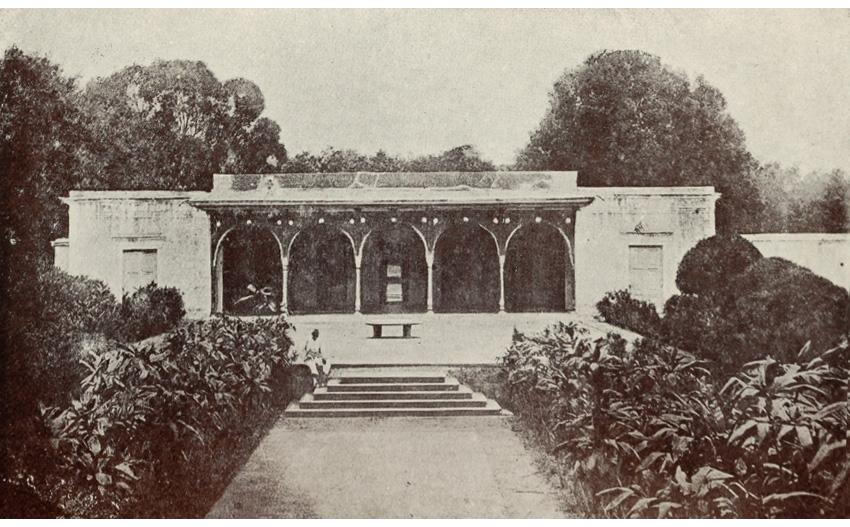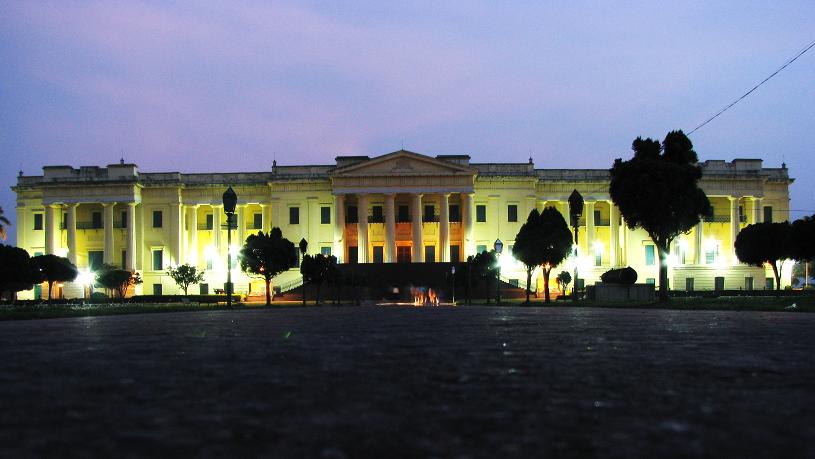Mubarak Ali Khan II on:
[Wikipedia]
[Google]
[Amazon]
Sayyid Mubarak Ali Khan II, popularly known as Humayun Jah (1810 – 1838), was born on 29 September 1810 to
 At ''Findall Bagh'' (now known as ''Mubarak Manzil'') the Courts of Justice of the
At ''Findall Bagh'' (now known as ''Mubarak Manzil'') the Courts of Justice of the 
 Nawab Nazim Humayun Jah died on 3 October 1838 and was succeeded by his son, Mansur Ali Khan.
Nawab Nazim Humayun Jah died on 3 October 1838 and was succeeded by his son, Mansur Ali Khan.
Ahmad Ali Khan
Sayyid Ahmad Ali Khan (died 30 October 1824), popularly known as Walla Jah or Ahmad Ali Khan of Murshidabad, was the Nawab of Bengal and Bihar. He succeeded his half-brother, Zain-ud-Din Ali Khan, after he died on 6 August 1821, without a male ...
and Nazib un-Nisa Begum. He was the Nawab of Bengal
The Nawab of Bengal ( bn, বাংলার নবাব) was the hereditary ruler of Bengal Subah in Mughal India. In the early 18th-century, the Nawab of Bengal was the ''de facto'' independent ruler of the three regions of Bengal, Bihar, ...
from 1824 to 1838. He was succeeded by Mansur Ali Khan. He built the famous and renowned Hazarduari Palace and ''Mubarak Manzil'' in Murshidabad
Murshidabad fa, مرشد آباد (, or ) is a historical city in the Indian state of West Bengal. It is located on the eastern bank of the Bhagirathi River, a distributary of the Ganges. It forms part of the Murshidabad district.
Durin ...
, India
India, officially the Republic of India (Hindi: ), is a country in South Asia. It is the List of countries and dependencies by area, seventh-largest country by area, the List of countries and dependencies by population, second-most populous ...
. Nawab Nazim Humayun Jah died on 3 October 1838.
Life
Early years
Mubarak Ali Khan was the only son ofAhmad Ali Khan
Sayyid Ahmad Ali Khan (died 30 October 1824), popularly known as Walla Jah or Ahmad Ali Khan of Murshidabad, was the Nawab of Bengal and Bihar. He succeeded his half-brother, Zain-ud-Din Ali Khan, after he died on 6 August 1821, without a male ...
. He succeeded his father after he died in 1824 under the titles of ''Humayun Jah'' (Of Auspicious Rank), ''Shuja ul-Mulk'' (Hero of the Country), ''Ihtisham ud-Daulah'' (Victor in War) and ''Feroz-e-Jang'' (Dignifier of the Country).
Reign as a Nawab
In 1826 he went toPatna
Patna (
), historically known as Pataliputra, is the capital and largest city of the state of Bihar in India. According to the United Nations, as of 2018, Patna had a population of 2.35 million, making it the 19th largest city in India. ...
for a change in the ''dewan
''Dewan'' (also known as ''diwan'', sometimes spelled ''devan'' or ''divan'') designated a powerful government official, minister, or ruler. A ''dewan'' was the head of a state institution of the same name (see Divan). Diwans belonged to the e ...
ship'' and when he attained his majority he took the management in his own hands, with the plan to dismiss Raja Ganga Dhar from the ''Nizamat Dewanship''.
 At ''Findall Bagh'' (now known as ''Mubarak Manzil'') the Courts of Justice of the
At ''Findall Bagh'' (now known as ''Mubarak Manzil'') the Courts of Justice of the East India Company
The East India Company (EIC) was an English, and later British, joint-stock company founded in 1600 and dissolved in 1874. It was formed to trade in the Indian Ocean region, initially with the East Indies (the Indian subcontinent and Sou ...
was erected, however, it was unused after the administration of law and justice was removed to Calcutta
Kolkata (, or , ; also known as Calcutta , the official name until 2001) is the capital of the Indian state of West Bengal, on the eastern bank of the Hooghly River west of the border with Bangladesh. It is the primary business, commer ...
. The ''Sadar Dewani Adalat'' (courts or ''darbars'') were held here from 1765 to 1781 until it was removed to Calcutta
Kolkata (, or , ; also known as Calcutta , the official name until 2001) is the capital of the Indian state of West Bengal, on the eastern bank of the Hooghly River west of the border with Bangladesh. It is the primary business, commer ...
. Subsequently, the Civil and Criminal Courts (which were located here) was transferred by Lord Cornwallis
Charles Cornwallis, 1st Marquess Cornwallis, (31 December 1738 – 5 October 1805), styled Viscount Brome between 1753 and 1762 and known as the Earl Cornwallis between 1762 and 1792, was a British Army general and official. In the United S ...
in 1793 by transferring the Supreme court
A supreme court is the highest court within the hierarchy of courts in most legal jurisdictions. Other descriptions for such courts include court of last resort, apex court, and high (or final) court of appeal. Broadly speaking, the decisions of ...
to Calcutta
Kolkata (, or , ; also known as Calcutta , the official name until 2001) is the capital of the Indian state of West Bengal, on the eastern bank of the Hooghly River west of the border with Bangladesh. It is the primary business, commer ...
. This spacious property of ''Findall Bagh'' was abandoned. There were also three buildings on this spacious property.
In May 1830 Nawab Humayun Jah bought this property from Raja Kissen Chand Bahadur and Kumar Chand of Nashipur
Nashipur is a village in the Murshidabad-Jiaganj CD block in the Lalbag subdivision of Murshidabad district in West Bengal, India.
Geography
Location
Nashipur is located at .
The Namak Haram Deorhi, Jafarganj Cemetery, House of Jagat Seth ...
for an amount of 35,000. He transformed the property into a pleasure garden and erected the ''Moti Mahal'' (also known as the Red Bunglow) here, he named the garden ''Mubarak Manzil''.
On the terrace in front of ''Moti Mahal'' stood the Royal Throne (black throne) used by the Nawab "Nazims" of Bengal from the time of Shah Shuja Shāh Shujā' ( fa, شاه شجاع, meaning: ''brave king'') may refer to the following:
* Shah Shoja Mozaffari, the 14th-century Muzaffarid ruler of Southern Iran
*Shah Shuja (Mughal prince) (1616-1661), the second son of Shah Jahan
*Shah Shujah ...
. It was brought here by Nawab Nazim Humayun Jah. This Royal Throne is round in shape and is made up of black stone. The throne is 6 feet (72 inches) in diameter and 1.5 feet (18 inches) high. It was made at Mongyer, Bihar
Bihar (; ) is a state in eastern India. It is the 2nd largest state by population in 2019, 12th largest by area of , and 14th largest by GDP in 2021. Bihar borders Uttar Pradesh to its west, Nepal to the north, the northern part of West ...
by Khwaja Nazar of Bokhara in 1643 AD. Robert Clive
Robert Clive, 1st Baron Clive, (29 September 1725 – 22 November 1774), also known as Clive of India, was the first British Governor of the Bengal Presidency. Clive has been widely credited for laying the foundation of the British ...
placed Mir Jafar
Sayyid Mīr Jaʿfar ʿAlī Khān Bahādur ( – 5 February 1765) was a military general who became the first dependent Nawab of Bengal of the British East India Company. His reign has been considered by many historians as the start of the expa ...
on this throne at Mansurganj after the Battle of Plassey
The Battle of Plassey was a decisive victory of the British East India Company over the Nawab of Bengal and his French allies on 23 June 1757, under the leadership of Robert Clive. The victory was made possible by the defection of Mir Jafar ...
in 1757 AD. Clive to sat on it side-by-side with Najimuddin Ali Khan
Najm ud-din Ali Khan, better known as Najm-ud-Daulah (or Nazam-ud-Daulah) ( bn, নাজিমুদ্দীন আলী খান; ca. 1747– 8 May 1766), was the Nawab of Bengal and Bihar from 1765 to 1766. He was the second son of Mir Jaf ...
at Motijhil when celebrating the ''pooneath'' after the acquisition of the Dewan
''Dewan'' (also known as ''diwan'', sometimes spelled ''devan'' or ''divan'') designated a powerful government official, minister, or ruler. A ''dewan'' was the head of a state institution of the same name (see Divan). Diwans belonged to the e ...
i by the East India Company
The East India Company (EIC) was an English, and later British, joint-stock company founded in 1600 and dissolved in 1874. It was formed to trade in the Indian Ocean region, initially with the East Indies (the Indian subcontinent and Sou ...
. The throne is now kept in Victoria Museum, Kolkata
Kolkata (, or , ; also known as Calcutta , the official name until 2001) is the capital of the Indian state of West Bengal, on the eastern bank of the Hooghly River west of the border with Bangladesh. It is the primary business, comme ...
.

Death and succession
 Nawab Nazim Humayun Jah died on 3 October 1838 and was succeeded by his son, Mansur Ali Khan.
Nawab Nazim Humayun Jah died on 3 October 1838 and was succeeded by his son, Mansur Ali Khan.
See also
*List of rulers of Bengal
This is a list of rulers of Bengal. For much of its history, Bengal was split up into several independent kingdoms, completely unifying only several times. In ancient times, Bengal consisted of the kingdoms of Pundra, Suhma, Vanga, Samatata ...
*Nawabs of Bengal
The Nawab of Bengal ( bn, বাংলার নবাব) was the hereditary ruler of Bengal Subah in Mughal India. In the early 18th-century, the Nawab of Bengal was the ''de facto'' independent ruler of the three regions of Bengal, Bihar, ...
*History of Bengal
The history of Bengal is intertwined with the history of the broader Indian subcontinent and the surrounding regions of South Asia and Southeast Asia. It includes modern-day Bangladesh and the Indian states of West Bengal and Assam's Karimga ...
*History of Bangladesh
Civilisational history of Bangladesh previously known as East Bengal, dates back over four millennia, to the Chalcolithic. The country's early documented history featured successions of Hindu and Buddhist kingdoms and empires, vying for region ...
*History of India
According to consensus in modern genetics, anatomically modern humans first arrived on the Indian subcontinent from Africa between 73,000 and 55,000 years ago. Quote: "Y-Chromosome and Mt-DNA data support the colonization of South Asia by ...
References
External links
* {{Bengal Zamindars Nawabs of Bengal 1810 births 1838 deaths